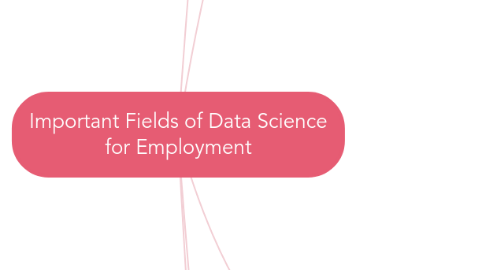
1. Data Engineering/ETL
1.1. Good Programming Skills
1.1.1. Python
1.1.2. R
1.2. Good Knowledge of Operating System
1.2.1. Linux
1.2.2. MAC
1.2.3. Windows
1.3. In Depth Knowledge of RDBMS
1.3.1. SQL
1.3.2. NoSQL
1.3.3. MS-SQL
1.3.4. Oracle
1.3.5. MongoDB
1.4. Knowledge of Big-Data Tools
1.4.1. Apache
1.4.2. Storm
1.4.3. Cassandra
1.4.4. Cloudera
1.5. Cloud Service
1.5.1. AWS
1.5.2. Azure
1.5.3. GCP
1.6. Algorithms
1.6.1. MapReduce
1.6.2. YARN
1.7. ML Deployment.
2. Data Visualization/EDA
2.1. Data Visualization Techniques
2.1.1. Bar Chart.
2.1.2. Pie and Donut Charts
2.1.3. Histogram Plot
2.1.4. Scatter Plots
2.1.5. Box and Whisker Plots for Big Data
2.1.6. Word Clouds and Network Diagrams for Unstructured Data
2.1.7. Correlation Matrix
2.2. Data Visualization Tools
2.2.1. Matplotlib
2.2.2. Plotly
2.2.3. Seaborn
2.2.4. Jupyter
2.2.5. Zoho
2.2.6. Excel
2.2.7. Tableau
2.2.8. Microsoft Power BI
3. Statistics & Mathematics
3.1. Descriptive
3.1.1. Measures of Frequency: Count, Percent,Frequency
3.1.2. Measures of Central Tendency: Mean, Median, and Mode.
3.1.3. Measures of Dispersion or Variation: Range, Variance, Standard Deviation.
3.1.4. Measures of Position: Percentile Ranks, Quartile Ranks
3.2. Inferential
3.2.1. Binomial Theorem.
3.2.2. Hypothesis Testing
3.2.3. Normal Distributions
3.2.4. T-Distributions
3.2.5. Central Limit Theorem
3.2.6. Comparison of Means
3.3. Experiment Design
3.3.1. Problem Statement
3.3.2. Hypothesis.
3.3.3. Explanation of Hypothesis
3.3.4. Prediction
3.3.5. Identification of Variables
3.3.6. Risk Assessment
3.3.7. General Plan and Diagram
3.4. Probability sampling
3.4.1. Simple Random Sampling
3.4.2. Stratified Random Sampling
3.4.3. Systematic Random Sampling
3.4.4. Cluster (Area) Random Sampling
3.4.5. Multi-Stage Sampling
3.5. Matching Sample to Population
3.5.1. Chi-Square Test
3.5.2. ANOVA
3.5.3. T-Test
4. Machine Learning
4.1. Supervised Learning
4.1.1. Classification
4.1.1.1. Image Clasification
4.1.1.2. Fraud Detection
4.1.1.3. Churn
4.1.2. Regression
4.1.2.1. Advertising Popularity Prediction
4.1.2.2. Weather Forcasting
4.1.2.3. Population Growth
4.1.2.4. Market Forcast
4.2. UnSupervised Learning
4.2.1. Clusturing
4.2.1.1. Big Data Visualization
4.2.1.2. Meaningful Compression
4.2.1.3. Structure Discovery
4.2.2. Dimensionality Reduction
4.2.2.1. Recomendor System
4.2.2.2. Customer Segmentation
4.2.2.3. Targeted Marketing
4.3. Reinforcement Learning
4.3.1. Real Time Decision Making
4.3.2. Robot Arm movement
4.3.3. Game AI
